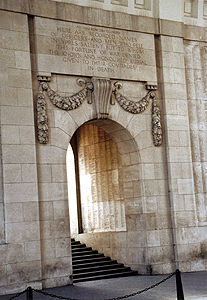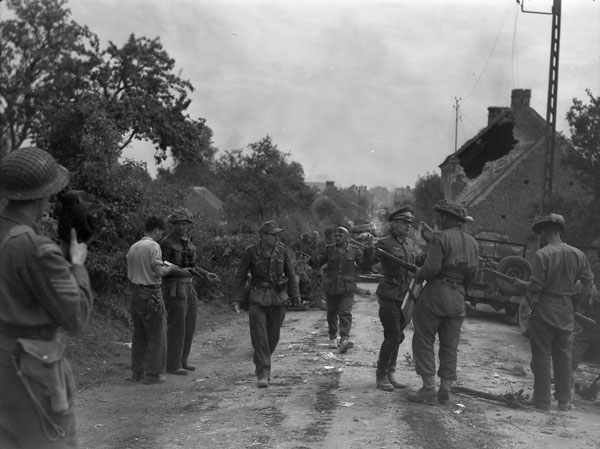
Early Life
Hugh Cairns’ family emigrated from England to Canada in 1911 and settled in Saskatoon, Saskatchewan. As a young man he sang in his church choir and was an avid soccer player. Cairns had completed his schooling in Britain before moving to Canada. In Saskatchewan, he apprenticed as a plumber and later set up his own plumbing business.
War Service
In the midst of the First World War, in August 1915, Cairns enrolled in the 65th (Saskatchewan) Battalion with his brother, Albert. The unit sailed to Britain in June 1916, but was broken up the day after arrival to provide reinforcements to other units. The Cairns brothers ended up in the 46th (South Saskatchewan) Battalion and embarked for France in August, as part of 10th Brigade, 4th Canadian Division (see Canadian Expeditionary Force).
Following the Canadian Corps' victory at Vimy Ridge, Cairns was awarded the Distinguished Conduct Medal after he vitally assisted another battalion’s attack and subsequent withdrawal during action against German positions east of the ridge in June 1917 — despite being wounded several times.
Having fought in most of the battles of the Canadian Corps following his arrival in France, Cairns had risen to sergeant by August 1918. That month saw the start of Canada’s famous Hundred Days campaign, which marked the last three months of the war spearheaded by the Canadian Corps (see Battle of Amiens, Battle of Cambrai, and Battle of Mons). In early September, his brother was killed, which spurred him to greater efforts.
Valour at Valenciennes
On 1 November, the Canadian Corps had reached the outskirts of the French city of Valenciennes, which marked the start of a two-day battle. In cold, wet conditions, the 10th and 12th Brigades led the attack. Overall, success was achieved quickly and the high ground at Mount Houy, a key position in front of Valenciennes, was captured. For the 46th battalion, however, it was a different story. The unit was held up by rifle, machine-gun and artillery fire from several locations.
Somehow, the battalion managed to advance and entered the outskirts of the city, but was held up again by a machine-gun post. Without hesitation, Cairns grabbed his Lewis machine gun and single-handedly charged the enemy position, killed the five-man crew and captured their gun. Later that day, he repeated his actions and rushed another machine-gun post by himself, killing 12 and taking 18 enemy soldiers prisoner, as well as capturing two guns. In a third act later that day, he outflanked another position, killed several enemy soldiers and captured more guns, although he was once again wounded.
After his unit captured and reinforced its new position, Cairns went forward with a patrol, armed again with his Lewis gun, and forced another 60 German soldiers to surrender. While disarming the group, he was severely wounded again, but opened fire and killed several. A group of roughly 20 Germans then tried to rush Cairns and overpower him. He collapsed at that moment from loss of blood, and was carried away during the skirmish by Canadian troops. Cairns was evacuated to 1 Canadian Casualty Clearing Station, where he died from his injuries the next day, 2 November. Nine days later, the armistice was declared, ending the war.
Cairns was posthumously awarded the Victoria Cross in recognition of his extraordinary bravery at Valenciennes — the last VC awarded to a Canadian in the First World War.

Memory
The French government made Cairns a chevalier of the Legion of Honour, and in 1936 the city of Valenciennes named an avenue in his memory.
In Saskatoon a school, street and armoury were named after Cairns, and a statue of him, dressed as a soccer player, was erected in Kinsmen Park in 1921. Other tributes to his bravery include a lake in Saskatchewan named after him.
(See also: The Canadian Great War Soldier and Evolution of Canada's Shock Troops.)

 Share on Facebook
Share on Facebook Share on X
Share on X Share by Email
Share by Email Share on Google Classroom
Share on Google Classroom


